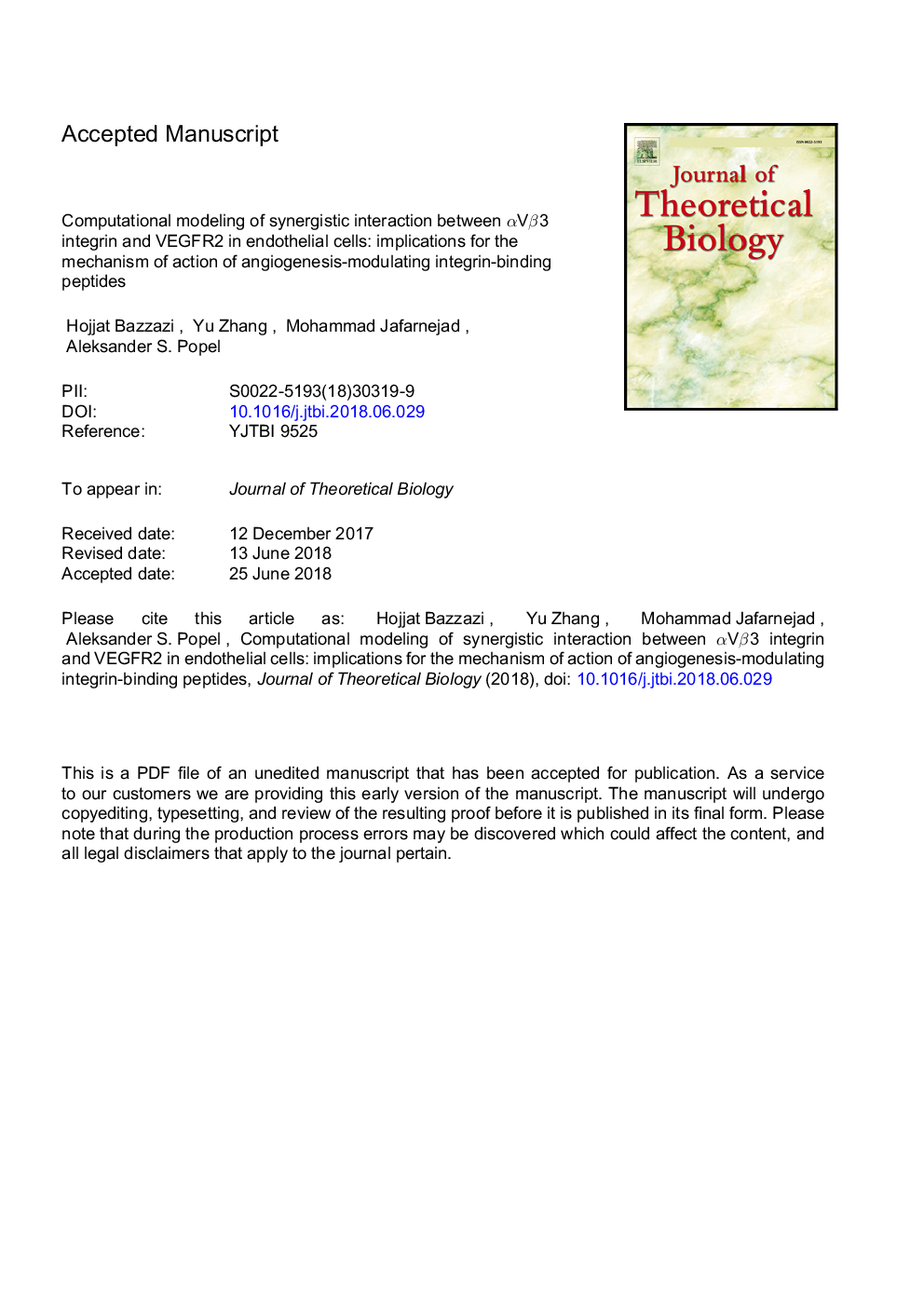| Article ID | Journal | Published Year | Pages | File Type |
|---|---|---|---|---|
| 8876504 | Journal of Theoretical Biology | 2018 | 37 Pages |
Abstract
Cooperation between VEGFR2 and integrin αVβ3 is critical for neovascularization in wound healing, cardiovascular ischemic diseases, ocular diseases, and tumor angiogenesis. In the present study, we developed a rule-based computational model to investigate the potential mechanism by which the Src-induced integrin association with VEGFR2 enhances VEGFR2 activation. Simulations demonstrated that the main function of integrin is to reduce the degradation of VEGFR2 and hence stabilize the activation signal. In addition, receptor synthesis rate and recruitment from internal compartment were found to be sensitive determinants of the activation state of VEGFR2. The model was then applied to simulate the effect of integrin-binding peptides such as tumstatin and cilengitide on VEGFR2 signaling. Further, computational modeling proposed potential molecular mechanisms for the angiogenesis-modulating activity of other integrin-binding peptides. The model highlights the complexity of the crosstalk between αVβ3 integrin and VEGFR2 and the necessity of utilizing models to elucidate potential mechanisms in angiogenesis-modulating peptide therapy.
Keywords
Related Topics
Life Sciences
Agricultural and Biological Sciences
Agricultural and Biological Sciences (General)
Authors
Hojjat Bazzazi, Zhang Yu, Mohammad Jafarnejad, Aleksander S. Popel,
